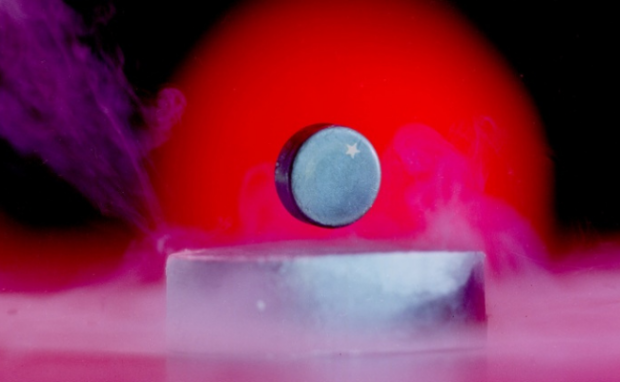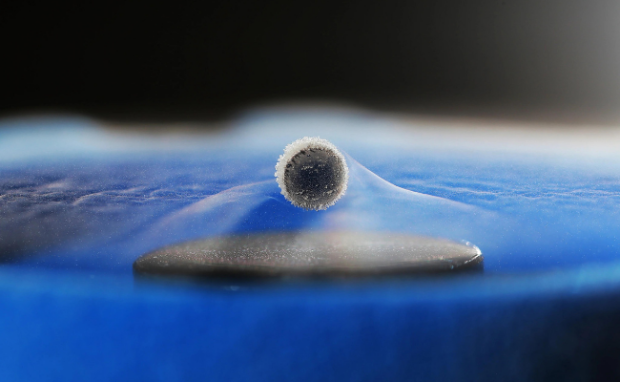A new form of superconductivity discovered
Researchers from Emory University and Stanford University discovered a new form of superconductivity. Dubbed oscillating superconductivity, materials exhibiting this phenomenon enables electrons to move through them without losing significant amounts of energy. More importantly, it works at room temperature.
LK-99 piqued the interest of scientists worldwide for its supposed superconductivity that requires extremely low temperatures. Most sources have disproven this material’s wondrous properties, but it inspired experts to continue researching superconductivity. We may enter another major technological revolution if experts turn this quality into reality.
This article will discuss how scientists discovered oscillating superconductivity and explain how it works. Later, I will elaborate on the potential worldwide impact of a material that can conduct electricity with no resistance at room temperature.
What is oscillating superconductivity?

Photo Credit: howstuffworks.com
Luiz Santos and his colleagues discovered oscillating superconductivity, which works in warm temperatures, unlike the conventional type. The former enables electrons to move through it by forming Cooper pairs to avoid losing significant amounts of energy.
Oscillating superconductivity is rare, but it is interesting for scientists who gained inspiration from LK-99. South Korean scientists claimed it exhibits superconductivity at room temperature, encouraging experts to research this phenomenon.
The Emory News Center says Santos and his team discovered it accidentally. He asked Emory physics graduate student Pedro Castro to investigate Van Hove singularities.
These structures let several electronic states become close in energy to produce singularities. As a result, Castro discovered these could facilitate the “right kind of physics to seed oscillating superconductivity.
“As theoretical physicists, we want to be able to predict and classify behavior to understand how nature works,” Santos says. “Then we can start to ask questions with technological relevance.”
Emory News claims that high-temperature superconductors can exhibit this behavior. Moreover, they can do it in temperatures roughly “three times as cold as a household freezer.”
The outlet also explained how experts discovered this phenomenon. In 1911, Dutch physicist Heike Kamerlingh Onnes showed mercury lost electrical resistance when cooled to 4 Kelvin or negative 371 degrees Fahrenheit.
In 1957, scientists discovered how materials in super-low temperatures can conduct electricity without energy loss. Normal temperatures enable their electrons to move freely.
That movement causes them to lose energy. However, low temperatures organize electrons into a new state of matter. “They form pairs that are bound together into a collective state that behaves like a single entity,” Santos explained, enabling them to carry current in a robust way.
What is the potential of a room-temperature superconductor?

Photo Credit: arstechnica.com
Our everyday devices rely on conductors to function. Most of the latter have some resistance, so these machines aren’t completely energy-efficient. Moreover, they require cooling systems like fans to prevent overheating.
For example, gaming PCs would cook from the inside out without proper ventilation systems. What if a room-temperature superconductor becomes real, and we apply it to complex gadgets like a gaming computer?
Then, we might not need cooling systems to operate them. More importantly, you could overclock or push them beyond their performance limits safely.
We might be able to create more compact versions of devices already using superconductors, such as magnetic resonance imaging (MRI) machines. A room-temp superconductor could enable us to create smaller versions for clinics.
Emory News cited magnetic levitation trains, which use superconductivity to move. Their platforms and rails use opposing magnetic fields to propel themselves forward.
If you create one with a room-temperature superconductor, it could become more efficient. It might operate despite extreme heat or cold because the temperature would not affect its magnetic properties.
Conclusion
Scientists from Stanford and Emory University discovered oscillating superconductivity. It is a rare form that lets electrons move through it without resistance despite warm temperatures.
Many experts thought LK-99 would achieve room-temperature superconductivity, but many sources have disproven it. Nonetheless, experts like Luiz Santos still try to make it a reality.
Perhaps their latest discovery will help them reach that Holy Grail of Physics. Learn more about the latest digital tips and trends at Inquirer Tech.